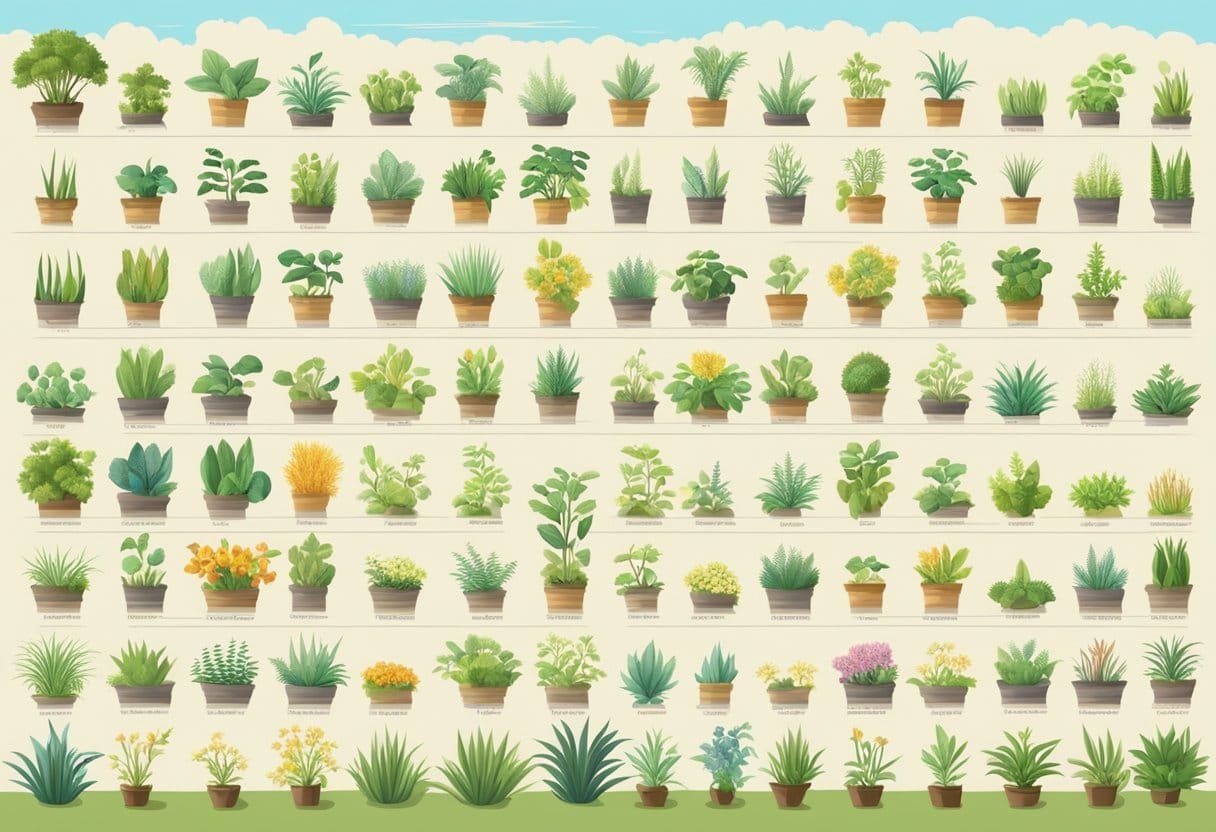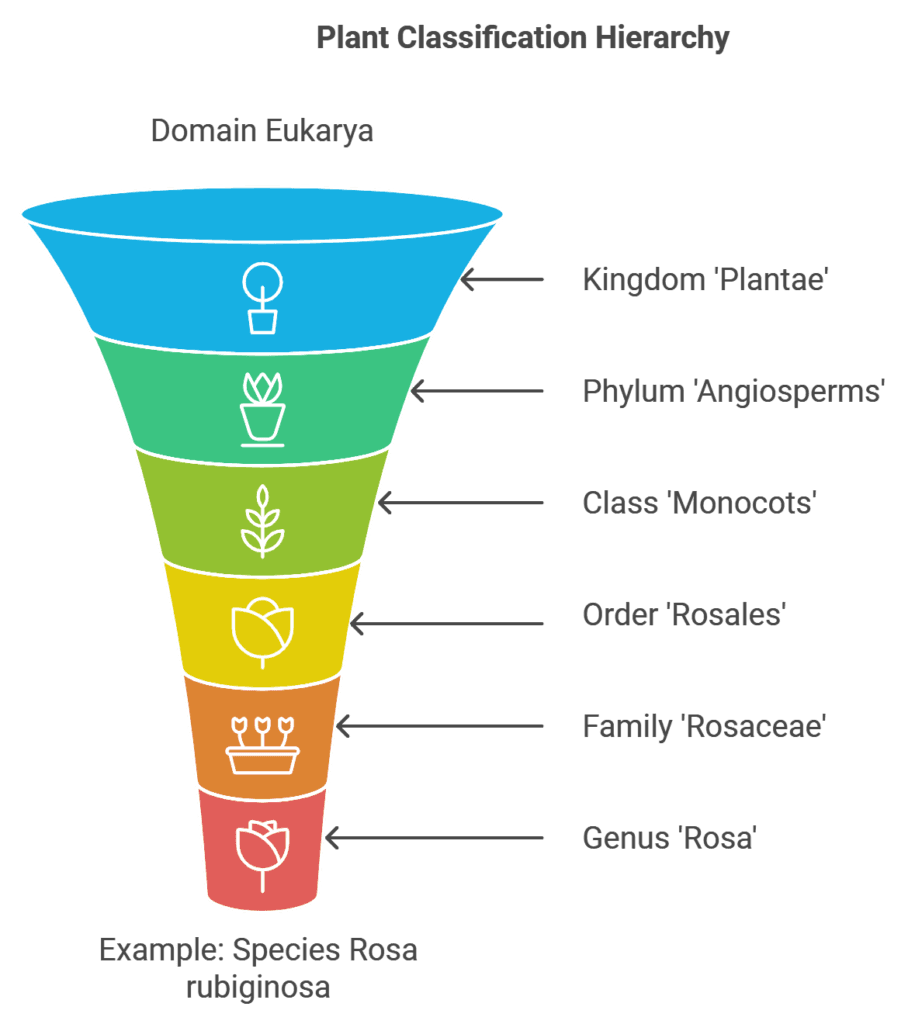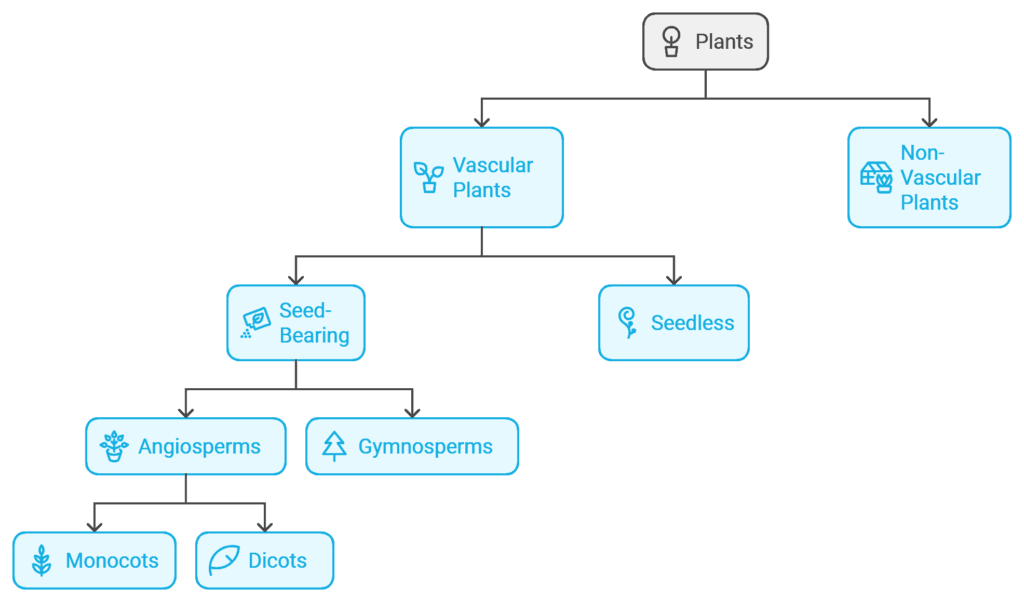
Plant Taxonomy for Dummies: Understanding Basic Plant Classification
Plant taxonomy is the science that helps us understand the diversity and relationships among plants by grouping them based on their characteristics. At its core, plant taxonomy involves naming, describing, and classifying plants into an organized system. This system ranges from broad categories like the kingdom to specific ones like species. Carl Linnaeus pioneered the binomial system, which gives each plant a scientific name composed of two parts.

The kingdom Plantae, part of the larger domain Eukarya, encompasses a vast array of plant species. Understanding this kingdom is crucial for anyone interested in the natural world or conservation efforts. Recognizing how plants are classified helps in studying their roles in ecosystems and in making informed decisions about conservation and biodiversity.
This guide will take you through the basic steps of plant taxonomy, using simple terms to make the topic accessible to beginners. You’ll learn how taxonomy applies in everyday life, whether it’s through using scientific names or understanding how different species relate to each other.
Key Takeaways
- Plant taxonomy classifies plants based on shared traits.
- Carl Linnaeus introduced the binomial system for naming plants.
- Understanding plant hierarchy aids in conservation efforts.
The Science of Classification

Principles of Plant Taxonomy
Plant taxonomy involves organizing plants based on shared characteristics. This process begins with broad categories like the plant kingdom and narrows down to order, family, genus, and finally species. Each level in this hierarchy helps identify plants and understand their evolutionary history.
The International Code of Nomenclature governs the naming process, ensuring consistency worldwide. Taxonomists use a binomial system, giving each plant a two-part Latin name representing both genus and species. This system, crucial for scientific communication, highlights the importance of classification in biology.
Historical Context and Carl Linnaeus’s Contribution
Carl Linnaeus revolutionized plant taxonomy in the 18th century. Known as the “father of taxonomy,” he created a systematic approach that classified plants into distinct categories. Linnaeus introduced the binomial system, which is still used today.
By arranging plants into hierarchical categories, Linnaeus simplified taxonomic classification. This method allowed scientists to study plant evolutionary relationships more effectively. His work laid the groundwork for modern taxonomy, shaping how plants are understood and classified across the globe.
Linnaeus’s contributions continue to influence present-day botanical sciences, providing a clear path for identifying species and recognizing their place in the natural world.
Understanding Plant Hierarchy

Plant hierarchy categorizes plants into structured groups, showing their evolutionary relationships. This organization ranges from large, general groups to the most specific, helping to identify and classify plants.
From Domain to Species
The plant hierarchy begins with the broadest category, the domain. Plants fall under the Eukarya domain, characterized by complex cells with a nucleus. Within this domain exists the Kingdom Plantae, which includes all plants.
A kingdom is further divided into phylum, grouping plants by major characteristics. Phylum then narrows into class and order, categorizing plants by more specific traits. An example within the plant kingdom is the Magnoliophyta phylum, which is the group of flowering plants.
Next, the family groups together plants with similar flowers and seed structures. Within the family, the genus pinpoints a closely related group, while the species identifies individual plants capable of reproducing among themselves. This system of classification helps in identifying plants accurately.
Plant Kingdom’s Place in the Hierarchy
The Plant Kingdom, part of the hierarchy, shows its significant role in organizing life on Earth. Within this kingdom, many plants share evolutionary relationships. These relationships allow scientists to understand how plants have evolved over time.
The kingdom is placed above the phylum, class, order, family, genus, and species in the hierarchy. Each level of this system displays critical information about a plant’s structure and function. Understanding these levels helps identify plants’ similarities and differences, emphasizing the complexity and diversity within the plant kingdom.
Through this hierarchy, researchers can track a plant’s evolutionary history and determine where it fits within the vast world of plant life.
Plant Kingdom Diversity
The plant kingdom is vast and diverse, encompassing a wide range of species from simple mosses to complex flowering plants. It is divided into several major groups with unique characteristics and ecological roles.

Major Plant Divisions
The plant kingdom is divided into two primary groups: vascular and non-vascular plants. Non-vascular plants, such as mosses, liverworts, and bryophyta, lack specialized tissue for transporting water and nutrients. They often thrive in moist environments where they can absorb water directly.
Vascular plants are more complex and include ferns, which reproduce through spores. Another critical division is within seed plants, categorized into gymnosperms and angiosperms. Gymnosperms, like conifers, have naked seeds that develop on cones. Angiosperms, known as flowering plants, produce seeds encased in fruits. This evolutionary development allows them to adapt to varied environments.
Variety Within Angiosperms and Gymnosperms
Angiosperms and gymnosperms dominate most terrestrial ecosystems due to their reproductive efficiency. Angiosperms are characterized by flowers with structures like pistils and pollen grains, facilitating diverse pollination mechanisms. They range from small herbs to towering trees, making up the largest plant group.
Gymnosperms, with members such as coniferophyta, adapt to colder climates with their needle-like leaves and woody trunks. Their reproduction involves pollen transfer via wind, and they produce resilient seeds. Despite having fewer species than angiosperms, gymnosperms play vital ecological roles in global carbon cycling and provide habitat for diverse wildlife.
Significance of Monocots and Dicots
Monocots and dicots are subclasses of angiosperms, differentiated by their embryonic leaf structure. Monocots, like grasses and orchids, have one seed leaf and often feature parallel leaf venation, fibrous root systems, and floral parts usually in multiples of three. This structural simplicity allows them to spread and adapt quickly in open areas.
Dicots, including roses, peas, and oak trees, have two seed leaves, net-like leaf venation, and often feature a taproot system. Their floral parts are usually in multiples of four or five, contributing to their complex reproductive structures. Understanding the diversity between these groups helps identify their roles in ecosystems, agriculture, and horticulture.
Practical Applications and Conservation

Plant taxonomy plays a significant role in agriculture and horticulture by enabling the identification and classification of plants. These practices are vital for conservation efforts aimed at preserving biodiversity. Understanding plant categories helps in developing effective strategies for sustainable growth and conservation.
Taxonomy in Agriculture and Horticulture
Taxonomy helps farmers and horticulturists identify and categorize plants, aiding in crop selection and plant breeding. It allows for the development of hybrids and new cultivars, improving food sources and plant resilience. Recognition of plant structures, like vascular systems (xylem and phloem), is essential for understanding plant growth and optimizing conditions such as soil and water needs.
In agriculture, proper plant classification supports efficient crop management by matching plant varieties to suitable environments. This aids in maximizing photosynthesis and improving yield. Horticulturists use taxonomy to design gardens that maintain diversity and aesthetic value while ensuring balanced reproduction cycles among plant species.
Conservation and Biodiversity
Conservation efforts depend heavily on taxonomy to preserve biodiversity. By classifying plants accurately, scientists can identify endangered species and devise strategies to protect them. Biodiversity is crucial for maintaining healthy ecosystems where plants serve as primary food sources, affecting animal and human life.
Understanding the specific needs of plants, such as soil and water requirements, supports successful conservation initiatives. Efforts focus on protecting natural habitats and assisting in the reproduction of rare species. Diverse plant life aids in maintaining ecosystem balance, ensuring robust and resilient environments. Taxonomy provides the tools to recognize and address threats to biodiversity effectively.
Frequently Asked Questions

Plant taxonomy involves classifying plants into categories based on shared characteristics and evolutionary history. This section answers common questions on the principles, methods, and significance of plant taxonomy.
What are the fundamental principles of plant taxonomy?
Plant taxonomy is based on identifying and naming plants. It groups plants by their shared traits and ancestry. Scientists use both morphology and genetics to understand these relationships, helping categorize plants more accurately.
How do taxonomists classify plants into different categories?
Taxonomists classify plants by evaluating traits such as leaf shape, flower structure, and genetic data. They place plants into categories like family, genus, and species. This grouping helps in understanding plant diversity and evolution.
What is the significance of plant taxonomy in biological sciences?
Plant taxonomy plays a vital role in biological sciences by organizing plant knowledge systematically. It aids in biodiversity conservation, ecological research, and environmental management. Understanding plant taxonomy is crucial for environmental awareness and preserving plant diversity.
Can you describe the hierarchical classification system for plants?
The hierarchical classification system starts with broad categories and narrows down. It begins with the domain and moves to kingdom, phylum, class, order, family, genus, and species. For plants, this system reveals evolutionary relationships and ancestry details.
What are some common tools and techniques used in plant identification?
Plant identification uses tools like dichotomous keys, field guides, and databases. Techniques include examining plant morphology, like leaf patterns and flower structures. Advances in molecular tools, such as DNA sequencing, provide deeper insights into plant identification.
How has molecular genetics influenced modern plant taxonomy?
Molecular genetics has revolutionized plant taxonomy by allowing scientists to study plant DNA. This approach helps reveal evolutionary connections that morphology alone cannot. It refines classifications and clarifies relationships, enhancing the understanding of plant diversity and evolution.









